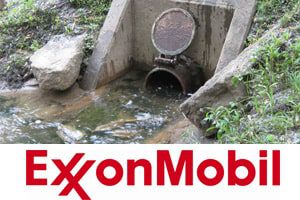
Exxon Mobil Corp. was just charged with dumping more than 50,000 gallons of wastewater in Pennsylvania. It seems that, in 2010, Exxon Unit XTO Energy Inc. illegally discharged wastewater from the Marquandt well site’s waste tanks, which are located in Pennsylvania’s Lycoming County, according to a statement that appears on the Pennsylvania attorney general’s (AG) […]
 Exxon Mobil Corp. was just charged with dumping more than 50,000 gallons of wastewater in Pennsylvania.
Exxon Mobil Corp. was just charged with dumping more than 50,000 gallons of wastewater in Pennsylvania.
It seems that, in 2010, Exxon Unit XTO Energy Inc. illegally discharged wastewater from the Marquandt well site’s waste tanks, which are located in Pennsylvania’s Lycoming County, according to a statement that appears on the Pennsylvania attorney general’s (AG) website, Bloomberg.com reported. Inspectors discovered a plug that had been removed from a tank, which enabled wastewater to be released, running onto the ground, which polluted an area stream, according to Bloomberg.com. XTO was then ordered to remove 3,000 tons of soil as part of area cleanup. Natural gas well wastewater may contain a number of toxins, including chlorides, barium, strontium, and aluminum, according to the AG’s statement.
“Criminal charges are unwarranted and legally baseless,” the XTO unit indicated in a statement posted on its website. “There was no intentional, reckless or negligent misconduct by XTO,” it added, Bloomberg.com reported. IN 2009, Exxon agreed to buy XTO for $34.9 billion.
In recent years, Pennsylvania has become among the largest gas producing states as drillers access the Marcellus Shale, a massive rock formation that spans much of the northeast United States and holds about 23 percent of the country’s shale gas reserves, according to Bloomberg.com, citing the Energy Information Administration. In fact, the Marcellus Shale formation is thought to contain billions of dollars in natural gas reserves.
As gas drilling has expanded and thousands of wells have been opened in just the last few years in surrounding areas, residents from New York, Pennsylvania, Ohio, Maryland, West Virginia, and New Jersey have raised concerns over the safety of fracking drilling.
Fracking drilling involves horizontally injecting tons of silica sand, a massive mix of more than 600 chemicals, and water at least one mile underground via a drill into a concrete well that extends to a bed of shale rock deep beneath the earth’s surface. When this combination reaches the rock, it is blasted apart and natural gas is released and supposed to be returned to the surface and captured; most of the water remains underground.
XTO was charged with five counts of unlawful conduct under the Clean Streams Law, according to Bloomberg.com. XTO was also charged with three counts under the Solid Waste Management Act. XTO said it agreed to pay “reasonable civil penalties” in a July 18, 2013 settlement with the U.S. Environmental Protection Agency (EPA) and the Department of Justice (DOJ), Bloomberg.com reported. XTO also agreed to recycle at least half its drilling wastewater, the agreement indicated.
While some believe fracking is an answer to a downturned economy and energy independence, more believe the drilling is putting the fresh water supplies for millions of people at risk. The risk is greater for those living closest to the drilling boom.
Fracking critics have long argued that fracking devastates the environment and contaminates groundwater and underground water aquifers; this contaminates nearby and widespread fresh water supplies. Either through the fault of shoddy wells, poorly trained well workers, or through a questionable drilling process altogether, natural gas and the contents of the drilling fluid may be released underground through cracks in the wells or the fractures created by the drilling. This, many area residents closest to wells believe, has led to a contamination of their private water supplies, in some cases rendering water completely contaminated.


